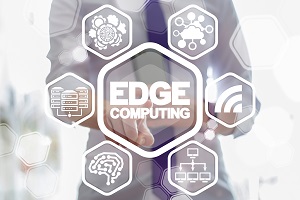In this contributed article, Luc Andrea, Engineering Director at Multiverse Computing, discusses the challenge of integrating increasingly complex AI systems, particularly Large Language Models, into resource-limited edge devices in the IoT era. It proposes quantum-inspired algorithms and tensor networks as potential solutions for compressing these large AI models, making them suitable for edge computing without compromising performance.
Addressing the Challenges of Real-Time Data Sharing in IoT
In this contributed article, Jeff Tao, Founder, CEO, and Core Developer of TDengine, discusses how the Internet of Things (IoT) has revolutionized how we live, work and share information.
While IoT has made accessing data easier, real-time data sharing – which requires seamless and
secure data transfer from connected devices in real-time – comes with its own challenges and concerns. But how can organizations address them?
Ambiq Optimized AI Features Development with neuralSPOT
Ambiq®, a technology pioneer in ultra-low power semiconductor products and solutions, introduced neuralSPOT®, an open-source AI developer-focused SDK designed for Ambiq’s latest Apollo4 Plus system on chip (SoC) family. While leveraging Ambiq’s proprietary SPOT® platform, neuralSPOT unlocks a game-changing, multi-fold improvement in energy efficiency for our end customers’ electronic products. The SDK encompasses essential software and tools for developers to advance AI features for their applications.
Emza and Alif Demonstrate Fast, Ultra-Efficient Object Detection for Tiny AI Edge Devices
Emza Visual Sense, a pioneer in Tiny AI visual sensing, is joining with Alif Semiconductor to show how the combination of powerful, highly efficient Arm®-based hardware and optimized models can make AI a reality at the edge. The companies are demonstrating Emza’s trained face detection model running on Alif’s Ensemble™ microcontroller (MCU), the first MCU featuring the Arm Ethos™-U55 microNPU. The Emza model runs an order of magnitude faster on the Ensemble device with Ethos-U55 compared to a CPU-only solution, with extremely low power consumption.
What the Internet of Things and Edge Computing Really Mean Today
In this contributed article, editorial consultant Jelani Harper takes a look at IoT, edge computing, and remote work. The ever shifting, restless nature of the data ecosystem is most acutely demonstrated in contemporary developments in the Internet of Things. The IoT is no longer a macrocosm of the Industrial Internet with distant fancies of smart homes and autonomous vehicles.
Data Collected from IoT Devices Will Breed the Next New ‘Uber’ or ‘Netflix’, Predicts Eseye
What organizations can do with data is set to dramatically shift in 2021 and beyond, according to IoT connectivity specialist Eseye, as more IoT devices are deployed and the data they generate dwarfs that collected through traditional online channels. Eseye predicts that data mined from user interactions with things rather than digital services will create a wealth of rich data, bigger and more detailed than online data ever was, enabling new business models, the creation of new products and services and new levels of understanding of human behavior.
Mastering the Internet of Things with Master Data Management
In this contributed article, editorial consultant Jelani Harper discusses how many organizations have struggled to harness the IoT’s scale, size, and speedy datasets for a cogent business use case justifying investing in this expression of big data. If the principal challenge is making sense of this continually generated streaming data in real-time, the solution is unequivocally as straightforward as it is effective: Master Data Management.
Expansion of the Edge: The Preeminent Importance of Edge Computing Today
In this contributed article, editorial consultant Jelani Harper discusses how the reliance on edge components and edge processing is becoming more critical to the decentralized big data landscape, especially with the ongoing need to communicate remotely. It’s imperative to ensure edge networks can be remotely provisioned, secured, and available for fringe processing where applicable to continue to support what’s become a burgeoning need for the IoT in general.
How IoT Could End Deforestation
In this contributed article, tech blogger Caleb Danziger believes that the Internet of Things (IoT) is one of the most exciting developments in recent technology. You likely use IoT devices every day, but they can also help end deforestation. People across the globe are already using the IoT in the fight to save the forest.
On the Edge of Something Big
In this contributed article, Tim Parker, VP of Network Strategy at Flexential, provides the top four reasons your organization needs an edge strategy now. Edge computing enables efficient data processing near the source to minimize latency, reduce bandwidth usage and lower costs while improving compliance, security and resiliency.









